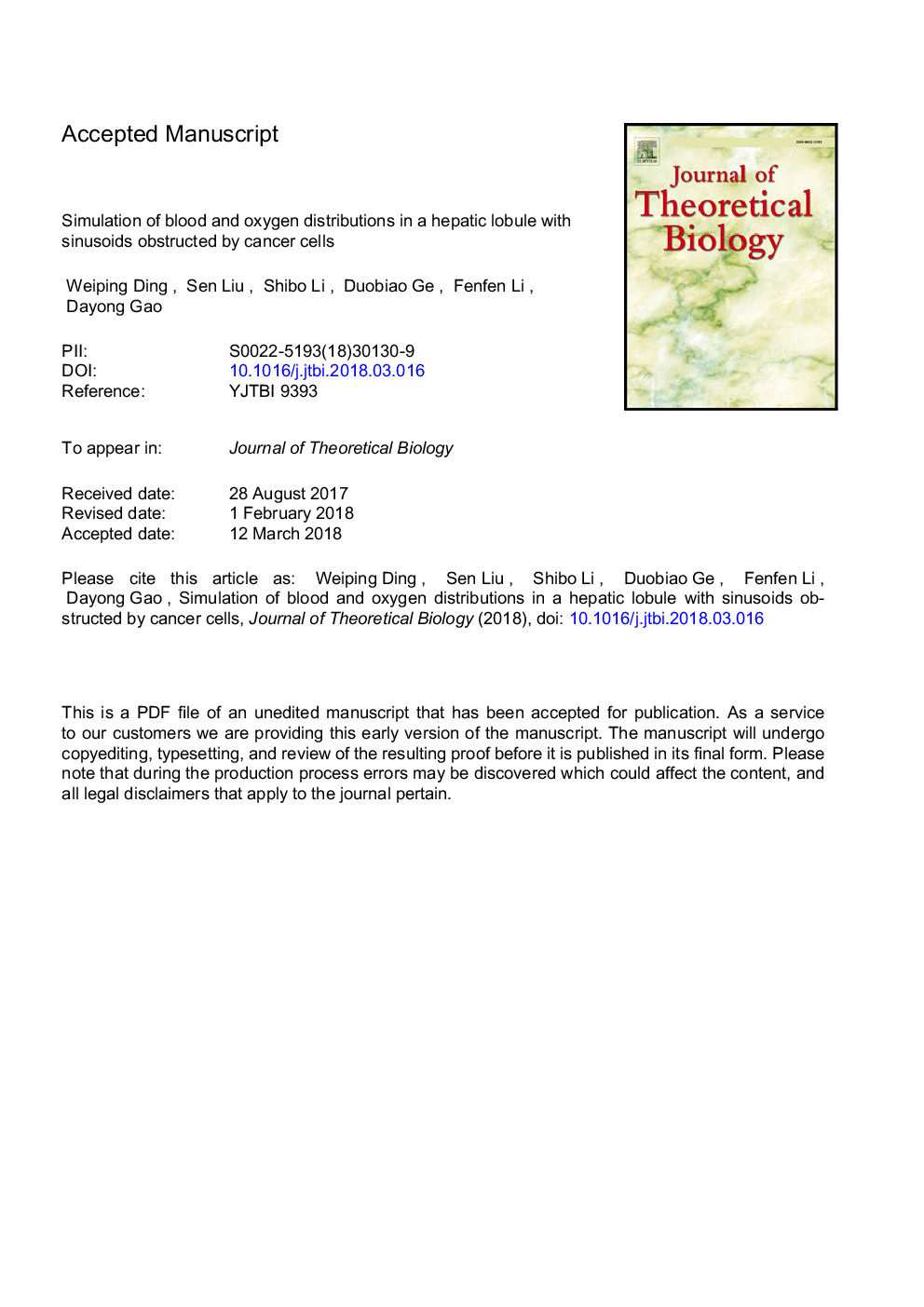| Article ID | Journal | Published Year | Pages | File Type |
|---|---|---|---|---|
| 8876744 | Journal of Theoretical Biology | 2018 | 27 Pages |
Abstract
The liver is one of the common metastatic sites for many cancers. The obstruction of sinusoids by circulating tumor cells changes liver microenvironments and is thus considered a source of hepatic metastases. To date, few studies provide detailed information, either experimentally or theoretically, concerning the changes in blood and oxygen distributions induced by the obstruction of sinusoids. In this study, we utilized a 3D porous medium-vascular tree geometric structure to mimic the hepatic lobule and studied theoretical blood flow and oxygen transport in the lobule. The simulation was validated with data from the literature. Then, the distributions of blood and oxygen in the presence of the obstruction by cancer cells were simulated. The area and degree of the liver damage induced by the obstruction were analyzed by comparing the difference of liver microenvironments between physiological (non-blocked sinusoid) and pathological (fully or partially blocked sinusoid) conditions and the minimum cancer cell sizes causing liver damage for various obstruction positions were obtained. The work presented in this study can be used to predict the degree of liver damage induced by the local ischemia caused by the obstruction of sinusoids and to characterize the relationship between hepatic metastases and liver microenvironments.
Related Topics
Life Sciences
Agricultural and Biological Sciences
Agricultural and Biological Sciences (General)
Authors
Weiping Ding, Sen Liu, Shibo Li, Duobiao Ge, Fenfen Li, Dayong Gao,
